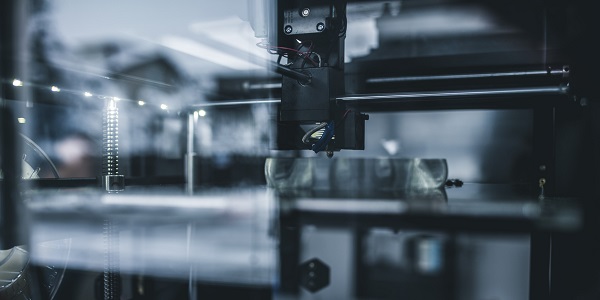Bioprinting and medical devices

Bioprinting offers a potentially attractive route to biological enhancement of medical devices
Bioprinting techniques first emerged in 2003 with the first demonstrations of cell printing. Bioprinting can be considered a sub-set of biofabrication, which can be defined as the processing of biological materials (cells, proteins, pharmaceuticals) and materials to create structures which have a designed biological function.
The potential impact of bioprinting on medical devices would be if bioprinting processes were used to enhance medical devices, for example through applying cells or biomolecules to a device prior to implantation. The device may be mass produced or custom-made, and bioprinting offers a potentially attractive route to biological enhancement of devices, with scope for that enhancement to be either personalized or stratified, through the use of cells harvested from the patient or the addition of pharmaceuticals based on a theranostic test. Given that the sterilization approaches and shelf life duration of medical devices are generally incompatible with the needs of biological materials, the most practical approach to combining medical devices with a medicinal product or substance may be for the medicinal product to be applied in clinic, immediately before the device was implanted.
The use of a medicinal product would change the regulatory environment. In the EU, medicinal products and substances are regulated either as:
- medicinal products, regulated by EC Directive 2001/83/EC and Regulation (EC) No 726/2004)
- advanced therapeutic medicinal products, if the product is based on genes, tissues or cells, with regulation through EC Directive 726/2004
Where a device is combined with a medicinal product it is known as a ‘combination product’. The combination of a 3D printed medical device with a medicinal product will present its own set of regulatory challenges. Put simply:
- where the main therapeutic effect to the patient is via the medicinal product, the combination would need to be regulated as a medicine (EC Directive 2001/83/EC); although the device part would require a Notified Body Opinion under Article 117
- where the main therapeutic effect is from the device part, with the medicine having an ancillary action, the combination could be considered a Class III medical device
Manufacturers will be required to demonstrate the principle action and ensure the correct regulatory path is followed.
Design, process integration and clearly understanding value, which are key elements to successfully using 3D printing for medical devices, will also be important in the exploitation of bioprinting processes for medical devices. The need to understand value in a product development process is not a surprise. The introduction of biological functionality will mean that the intended biological effect will be part of the design process, and integration will include cell and tissue culture processes as well as other design and manufacture steps. A further key element of product development is clarity regarding the regulatory process, and the combination product regulatory process would be a further consideration when seeking to exploit bioprinting to enhance a medical device.
This is an excerpt from the BSI medical devices white paper The impact and potential for 3D printing and bioprinting in the medical devices industry. To download our other medical device white papers, please visit the Insight page on the Compliance Navigator website.
Request more information today for a call back from a member of our sales team so that you can get a better understanding of how Compliance Navigator can meet your needs.
The Compliance Navigator blog is issued for information only. It does not constitute an official or agreed position of BSI Standards Ltd or of the BSI Notified Body. The views expressed are entirely those of the authors.

